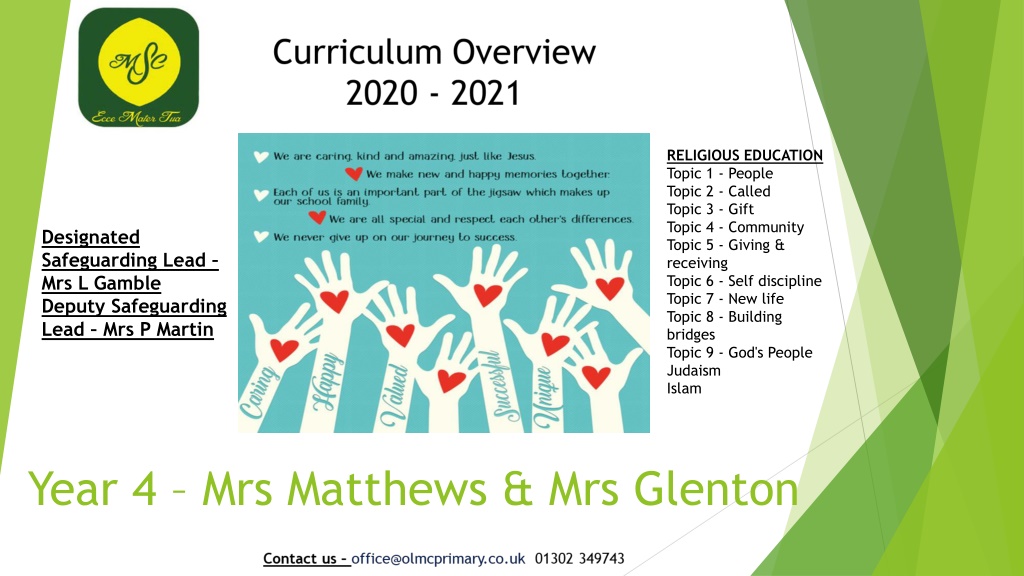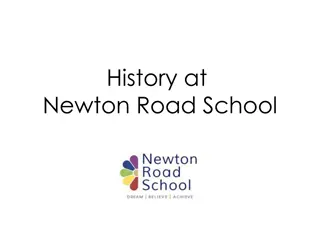Exploring People, Cultures, and Lands: Educational Journey Through History and Geography
Delve into a captivating educational journey exploring different aspects of people, cultures, and lands throughout history and geography. Topics range from religious education to historical invasions, and from understanding life in Britain to discovering the wonders of the USA. Engage in a diverse learning experience that encompasses topics like community, traditions, self-discipline, and the impact of historical events on society today.
Download Presentation

Please find below an Image/Link to download the presentation.
The content on the website is provided AS IS for your information and personal use only. It may not be sold, licensed, or shared on other websites without obtaining consent from the author. Download presentation by click this link. If you encounter any issues during the download, it is possible that the publisher has removed the file from their server.
E N D
Presentation Transcript
RELIGIOUS EDUCATION Topic 1 - People Topic 2 - Called Topic 3 - Gift Topic 4 - Community Topic 5 - Giving & receiving Topic 6 - Self discipline Topic 7 - New life Topic 8 - Building bridges Topic 9 - God's People Judaism Islam Designated Safeguarding Lead Mrs L Gamble Deputy Safeguarding Lead Mrs P Martin Year 4 Mrs Matthews & Mrs Glenton
Vocabulary: Angle Anglo-Saxon Scots Pict conquer Germanic invade jute longhouse monastery pagan Saxon Viking Norse AUTUMN TERM IN YEAR 4 Traders and Raiders Key texts/Reading Comprehension focus: The Boy Who Grew Dragons - Literacy Shed plus VIPERS Whole class text Writing focus - How To Train your Dragon: Cressida Cowell Rationale: Understand the Who? When? Why? Where? of the changes of peoples lives in Britain after the Romans left and the Anglo-Saxons, and then the Vikings, invaded. Looking at the geography of Britain and invaders homelands; Why they came, How did it affect Britons lives, How the Anglo-Saxons/ Vikings lived: Villages, laws, family life, Religion: comparing each aspect to life today. By the End of the Topic: Have an understanding how and why life in Britain has changed throughout history. Be able to locate Norse countries on a map. Big and strong, powerful and brave, the Saxons wave their battle axes and brandish their swords as they begin to invade Britain s shores. Sail back to the Dark ages, where battles were rife and fear reigned. Find out about the life of the Saxons, including how they lived and where they came from. Meet the bloodthirsty Vikings from Scandinavia never before had such a terror swept the land. Help your child prepare Watch out the Saxons and Vikings are invading! Why not visit your local library together to see if there have been any Saxon or Viking invasions in your area? You could also find out more by visiting your local museum to explore Saxon and Viking connections further. Alternatively, read books and watch films together to gain an insight into this period, such as How to Train Your Dragon.
Key texts/Reading Comprehension focus: SPRING TERM IN YEAR 4 The Boy Who Biked The World Part Two Riding the Americas Memorable experience: Fly to New York! (classroom VR experience) Visit the states around the world (on the field) Austerfield Visit: Orienteering & Mayflower walking tour Buckle up, sunglasses on we re going on a road trip across the good old USA! Flying from London Gatwick, and landing at JFK airport New York. It s time to explore the sights and sounds of the Big Apple. Use your map skills to navigate your way around some of its most famous landmarks and send the postcard home to ask the question: Do you wish you were here? Meet the Iroquois tribe: Native Americans with amazing customs and traditions. It s going to be a long ride, put the roof down and let the wind blow through your hair we re off! Rationale: Children to have a greater understanding of the world around us: the geography of the USA and why people like to live there and holiday there. Learn about a non-European society that provides contrasts with British history. Be able to talk about Mountains: name some, say where they are in the world and understand mountain climate and habitat. By the End of the Topic: Have an understanding of where the USA is in the world, locate it on a map, identify some key physical and human characteristics and major states. Have a respect for Native American culture recognising the contribution made to life today. Have an understanding of what mountains are, how they were made identify some in the UK and America. Have a respect for the mountainside, know how to care for it. Vocabulary: climate culture custom dream catcher equator government indigenous landmark legend longhouse Native American Northern Hemisphere Southern Hemisphere physical features state tribe Help your child prepare The USA is an incredible place, with a varied landscape and culture. Why not choose a state to research together and create a scrapbook of exciting locations? You could also make a playlist of American songs from different genres that you could listen to on your road trip. Alternatively, visit the supermarket together to see if you can identify any foods associated with the USA. You might even try some of them!
Vocabulary: ocean names continents continent names climate current equator Tropic of Capricorn Tropic of Cancer longitude latitude time zones submerge submarine marine pollution The Blue Abyss Key texts/Reading Comprehension focus: Reading: Oliver and the Seawigs by Philip Reeve Writing: Flotsam, David Wiesner Grab your wetsuit! We re going deep into an underwater world of incredible coral and mysterious sea creatures. Head to the local aquarium and learn about life in the ocean. Can you pick a favourite fish, plant or animal? What do real divers get up to below the surface? Create a fishy story about exploring an amazing underwater world. Time to get a little deeper into our seas. Make a model deep-sea submarine that can withstand great pressure and travel to the deepest darkest places on earth. Make sure you test it first! What are those bright lights in the distance? It s a group of bioluminescent sea creatures! Flippers on? Snorkles ready? Let s head to the blue abyss Rationale: To understand the planet we live on and the importance of the oceans: * how they affect our planet, * the creatures that live in it, * our role in conservation * how much is known and to be explored further Educational Visit: The Deep Sea Turtle focus in school Visit Help your child prepare Oceans are remarkable and fascinating places that are full of life. Why not visit the coast together to see an ocean or sea up close? You could also look at an atlas or online map to find out which seas and oceans surround Britain. Alternatively, work together to create an under-the-sea collage using different materials to represent the plants, creatures and water.
MATHEMATICS MASTERY AUTUMN Reasoning with 4-digit numbers Solve number and practical problems with increasingly large numbers; identify, represent and estimate using different representations. Addition and subtraction Calculate and estimate numbers with up to 4 digits using formal written methods; solve two-step problems, deciding on appropriate methods. Multiplication and division Understand and use distributive law; use place value to calculate mentally; use formal written method to multiply two and three-digits numbers by one-digit numbers. Discrete and continuous data Solve, compare, calculate, interpret and present data using appropriate graphical methods; understand line graphs. MATEMATICS MASTERY SPRING Securing multiplication facts Recall multiplication facts up to 12 x 12. Fractions Show families of equivalent fractions; solve problems with increasingly harder fractions; add/subtract fractions totalling more than 1. Time Solve problems converting between units of measure, analogue and digital 12 and 24-hour clocks. Decimals Discover decimals; recognise decimal equivalents to tenths, quarters and halves; compare numbers with the same number of decimals places. Area and perimeter Measure and calculate perimeter of rectilinear shapes; measure, calculate and compare areas of rectangles and composite rectilinear shapes. MATHEMATICS MASTERY SUMMER Solving measure and money problems Convert between units of measure; estimate, compare and solve simple measure and money problems including fractions and decimals. Shape and symmetry Compare and classify geometric shapes and angles; identify lines of symmetry in 2-D shapes. Position and direction Describe positions and movements and plot specified points and lines on a 2-D grid. Reasoning with patterns and sequences Read Roman numerals and understand a brief history of the number system; recognise and use square numbers and their notation; understand negative numbers to -100. 3-D shape Identify 3-D shapes from 2-D representations.























